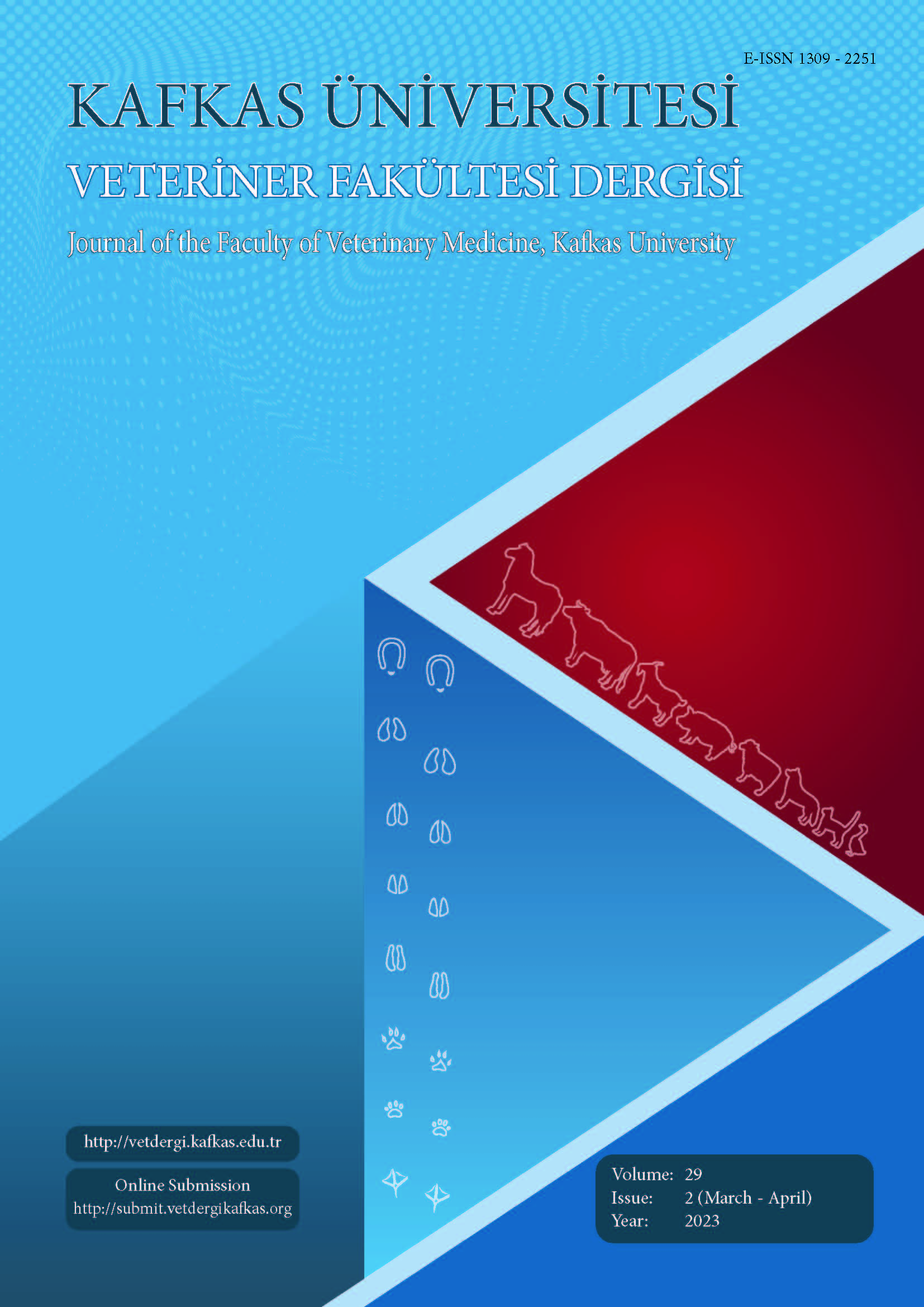
This journal is licensed under a Creative Commons Attribution-NonCommercial 4.0 International License
Kafkas Üniversitesi Veteriner Fakültesi Dergisi
2023 , Vol 29 , Issue 2
Co-application of QX-314 and Lidocaine in Rabbit Brachial Plexus Block Using a Nerve Stimulator
1Shahid Chamran University of Ahvaz, Faculty of Veterinary Medicine, Department of Clinical Sciences, 61355145 Ahvaz, IRAN2Shahid Chamran University of Ahvaz, Faculty of Veterinary Medicine, Department of Basic Sciences, 61355145 Ahvaz, IRAN DOI : 10.9775/kvfd.2022.28380 We aimed to assess the efficacy and safety of QX-314, and lidocaine co-application (QX/Lid) in rabbit brachial plexus block (BPB) using the neurostimulation method to improve the selectivity and quality of induced regional anesthesia. Fifteen female rabbits (1.5- 2 kg) randomly assigned into three groups: Lidocaine: 5 mg/kg; QX-314: 35 mM and QX/Lid: 35 mM + 5 mg/kg. The relevant anesthetic solution injected into the BP using a nerve stimulator (NS) and the BPB was evaluated by assessing sensory and motor functions. Based on the reaction to painful stimuli and the loss of bearing weight on the treated forelimb, respectively, the onset and duration of sensory and motor block were measured. The quality of sensory block assessed by using the scoring method. Blood samples collected before and at 5 min after drug injection up to180 min to measure the plasma concentration of QX-314 by HPLC. The QX/Lid resulted in a significantly faster onset of sensory and motor block, significantly decreased the duration of motor block and improved the quality of sensory block. QX-314 peak plasma concentration observed at 5 and 45 min in QX-314 and QX/Lid groups, respectively, and there was no behavioral evidence of systemic toxicity. In conclusion: QX/Lid co-application accelerate the onset of BP block with a greater quality of sensory and motor blockade separation and can be safely performed in rabbits using the NS method. Keywords : Brachial plexus block, Lidocaine, QX-314, Rabbits










